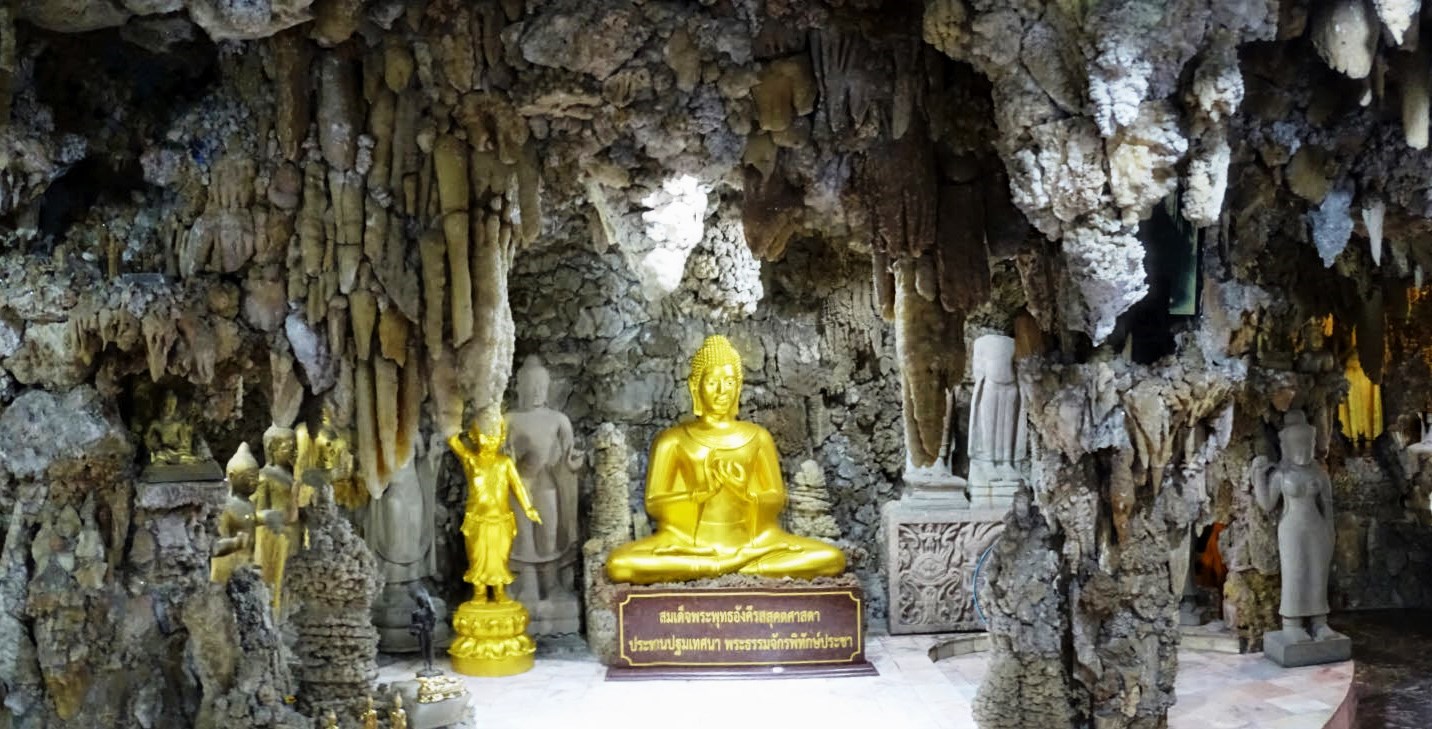Wat Phayap
Nakhon Ratchasima City (Khorat)
Nakhon Ratchasima Province
November 17, 2021
Hello,
The cave on the grounds of Wat Phayap is not the most stunning or inspiring cave. The cave is small, about 16 by 12 meters, 3 meters high (52 ft x 39 ft x 10 ft).
But, the story is appealing.
This cave is completely RECONSTRUCTED. You might say artificial. Certainly not natural. The “cave” was built from rocks from neighboring Saraburi Province.
The cave is named Parat Cha Wemonmoree in honor of the monk who was the head of the Wat Phayap temple, and who initiated the construction of the cave.
Years before, the government granted a concession to a mining company to make concrete. To get material for the fabrication of concrete, the company blasted a mountain. The rocks in the cave, the ones making stalagmites and stalactites, were gathered from the mountain in nearby Saraburi Province. The villagers were selling them.
The monk found these rocks attractive. He collected, cleaned, organized, and displayed them in cabinets at the temple. From 1990 to 1993, with the help of the local workers and monks, he assembled the rocks and installed them in the “cave.”
Later they decorated the cave with Buddhas that were donated by Thai people and other monks A few of the statues may be three hundred years old.
(I did find it a bit strange that there would be such a small yet remarkable and complex cave that happened to be uncovered in the middle of a busy city. Nevertheless, I dutifully wandered around the cave and took my pictures. Only later, when I did a bit of research for this letter, did I realize that I was “fooled.”)
The lovely grounds of the adjoining Wat Phayap are decorated with huge stones and Buddha carvings. Originally imported from India, a now enormous Bhothi tree graces the eastern edge of the grounds.
I notice two unusual structural components at the temple. The base of the temple is slightly curved, like the hull of a boat, and is meant to give the impression that the entire temple is floating. The doors are unique. They are not rectangles. They are trapezoids.
Jenjira and I visit the cave and the pleasing, peaceful temple after we paid our respects at the nearby Thao Suranaree (Ya Mo - Lady Mo) Monument. The monument has many visitors. At the Temple we are alone.
Except at the cave where a monk gave us a tour. He spoke mostly in Thai. Jenjira understood him of course. So when I admitted to her that I just realized I was fooled, she admitted to me that she knew all along that the “cave” was only a “museum.”

